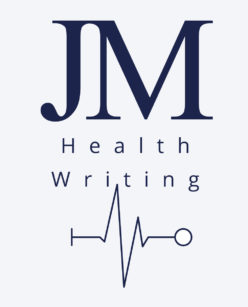
Pain and swelling are common after an injury or surgery. For most people, these symptoms resolve within an expected time frame. Often, the pain and swelling typically experienced after an injury or surgery are proportional to the extent of the trauma.
Complex regional pain syndrome (CRPS) is a term used to describe pain and swelling to an arm or leg that is excessive and prolonged post-injury. In CRPS, the pain and swelling experienced can no longer be explained by the initial trauma.
Reflex sympathetic dystrophy (RSD), or causalgia are other terms used to describe CRPS. Since CRPS is a syndrome, it is characterized by a group of symptoms and can be challenging to diagnose. There is no test to determine if one has CRPS.
CRPS can occur after an injury, or surgery when peripheral C-fibers, the nerve fibers that carry pain signals to the brain do not function properly. This condition can either be acute (lasting days to six months) or chronic (lasting over 6 months).
There are two types of CRPS:
- Type I CRPS – the nerve lesion cannot be identified
- Type II CRPS – the nerve lesion is identified.
What are the symptoms of CRPS?
Pain that seems to occur for no particular reason is a symptom of CRPS. While this pain is constant, it can fluctuate with activity. Those with CPRS often describe their pain as burning or pins and needles.
Increased sensitivity in the affected area, where even light touch can be painful is another common symptom. This is known as allodynia (think of how sunburnt skin can be painful when it comes into contact with clothing – a sensation that is not typically painful).
Other common symptoms of CRPS include:
- Changes in the temperature and/ or color of the affected limb
- Swelling
- Changes in the texture of the affected limb
- Abnormal sweating in the affected area
- Abnormal hair, or nail growth in the affected area
- Stiffness in the affected joints
- Bone wasting, or excessive bone growth
- Decreased muscle strength resulting in poor movement.
At first, CPRS may occur at a certain body part. Over time, however, CRPS may cause changes to occur in the spinal cord and the brain.
CRPS can happen after trauma to a body part.
Events that may lead to CRPS include:
- Surgery
- Fractures
- Burns
- Cuts
- Immobilization of a body part
- Sprains and strains
- Puncture wounds.
Most people with these types of traumas will heal as expected, making CRPS rare. Conditions such as poor circulation and poor nerve health can increase the chances of getting CRPS. Behavioral conditions such as depression and anxiety may also contribute to CRPS. Genetics can play a role in the development of CRPS, too.
People who have an increased risk of developing CRPS include those with inflammatory conditions such as asthma. Women and those over the age of forty also tend to have a higher risk of developing CRPS.
How is CRPS diagnosed?
Diagnosing CRPS can be difficult. A physician can make the diagnosis after a detailed examination. Studies such as a nerve conduction study, ultrasound, and magnetic resonance imaging (MRI) may aid in determining the affected nerve.
What treatments are available for CRPS?
If you are diagnosed with CRPS, there are different treatments available. Your medical team can help you to select the right treatments for you.
- Rehabilitation/ Physical therapy: Working with a physical therapist, or occupational therapist can help to regain mobility, strength, and function of the affected area.
- Elevation: Elevating the affected area when resting or sleeping can help to control swelling.
- Psychotherapy: depression, situational anxiety, and post-traumatic stress disorder (PTSD) may arise with severe CRPS. These psychological problems can increase pain perception and lead to decreased activity and brain function. Psychological treatment can help those with CRPS to feel better and have a more successful recovery.
- Graded motor imagery: This includes mental exercises to help visualize moving the painful body part without actually moving that part. This technique may provide non-painful input to the brain.
- Medications: Acetaminophen, NSAIDs, medications for neuropathic or nerve pain (gabapentin, pregabalin, nortriptyline), topical agents such as lidocaine cream, and corticosteroids are some common treatments for CRPS
- Spinal cord or neural stimulation: This can include stimulators implanted in the brain, near the spinal cord, or near injured nerves. Transcranial Magnetic Stimulation (rTMS) or transcutaneous electrical nerve stimulation (TENS) involves electrodes placed either on the surface of the skull or on the surface of the skin. Both rTMS and TENS are less invasive.
- Spinal fluid drug pumps: This is an implanted device that delivers pain-relieving medication to the fluid that bathes the spinal cord.
- Alternative and holistic therapies: Treatments such as behavior modification, acupuncture, relaxation techniques, medical marijuana, and chiropractic treatment may also be helpful for those with CRPS. However, more research is needed.
Nerve regeneration is vital to overcoming CRPS. People who smoke, have diabetes or have recently undergone chemotherapy often have longer healing times.
What is the future plan?
The National Institute of Neurological Disorders and Stroke (NINDS), a division of the National Institute of Health, seeks to decrease the burden of neurological disease by gaining knowledge of the brain and nervous system and is the leading supporter of biomedical research in the world. This group provides funding and support for research on CRPS.
ClinicalTrials.gov can provide information on current research to better understand CRPS.
Where can I get more information about CRPS?
- Brain: the NINDS Brain Resources and information. Phone number: 800-352-9424
- Neuropathycommons.org: A site hosted by Harvard University containing information on peripheral nerves
- Reflex Sympathetic Dystrophy Syndrome Association (RSDSA): A group providing support for the RSDSA community. Phone number:203-877-3790, 877-662-7737
- International Research Foundation for RSD/CRPS: A not-for-profit organization dedicated to education and research on Reflex Sympathetic Dystrophy and Chronic Regional Pain Syndrome. Phone number: 813-907-2312
Like what you read here? Contact me.
